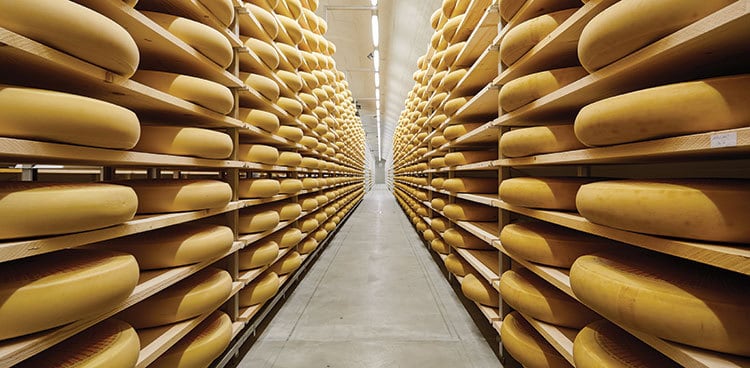
Photographed by Tom Trachsel
It would be easy to miss the door. Wedged into a verdant valley in the shadows of craggy, glacier-studded Blüemlisalp mountain, the entrance is shielded by spruce trees at the shore of a trickling river—the last place you’d expect to find a secret cave filled with weapons and ammo. But here it is, a military fort burrowed 650 feet into a rocky precipice.
It’s not the only one. Switzerland’s peaks have long represented respite and refuge, providing shelter safe from conquerors and invaders. Yet as the Cold War drew to a close, many of the neutral country’s caves sat unused. By the mid-1990s, most had been decommissioned and abandoned. These caves are of special interest to companies like Gourmino, which need space to age thousands of giant Alpine cheeses such as Emmentaler and Gruyère in a humid-yet-cool environment.
Gourmino managing director Roland Sahli had wanted a bigger affinage facility for years, but building one from scratch would have been too expensive. As for the mountain forts, “the military spent a lot of money making every detail perfect,” says marketing director Karina Jeker. The logical solution? Buying a defunct fort and filling it with cheese.
After two years of planning, the team began a year of construction. From clearing out old hand grenades to blasting a new tunnel connecting the cave’s separate chambers to hiring a village carpenter to craft 30,000 spruce aging planks, the transformation—recorded in these photos— was enormous. The once-dusty chambers now glisten, their hue transforming from grey to gold as wheels move in, embodying a country’s evolving history in a secret cave.
It took Gourmino two years to develop the plans for the facility. Inside, 300-feet-long bomb-proof corridors lead to the cheese cellars. The cellar walls are surrounded by a 15-inch barrier, a hollow space, and a 30-inch concrete shell—this construction protects the bunker from water damage while still allowing for high humidity.
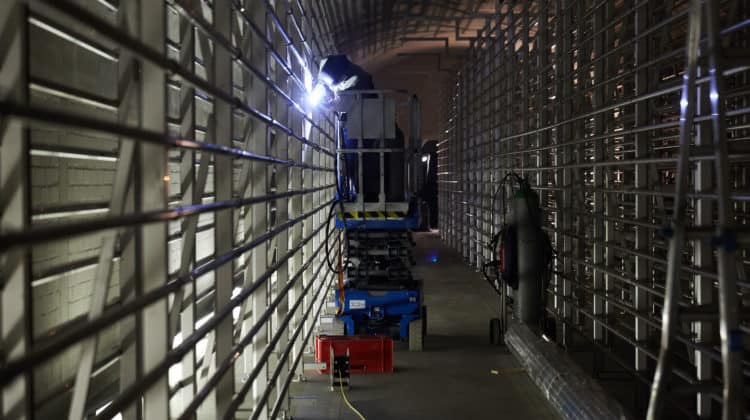
Shelving was installed in each aging cave. The wood boards were then added, and ready for the first wheels of Emmentaler and Gruyère.
- In one of the cave’s tunnels, a statue of Saint Barbara, patron saint of miners, looks over the workers.
To ease the flow of goods and personnel between the four separate bunker tunnels, construction workers blasted a transverse tunnel into the rock.

Gourmino cheeses age on wood boards. To outfit the new facility, the company hired a local carpenter, Hansueli Ryter, to construct 30,000 boards at his small shop. Ryter’s wood shop had to be enlarged to fit all of the planks. The boards are made from local red spruce.
Out of four bunkers, the first is filled with Gruyère AOP, Sbrinz, and other Alpine wheels. The second is stocked with 4,400 wheels of Emmentaler AOP and Rahmtaler, a full-fat version. The remaining two bunkers are currently rented by other companies.
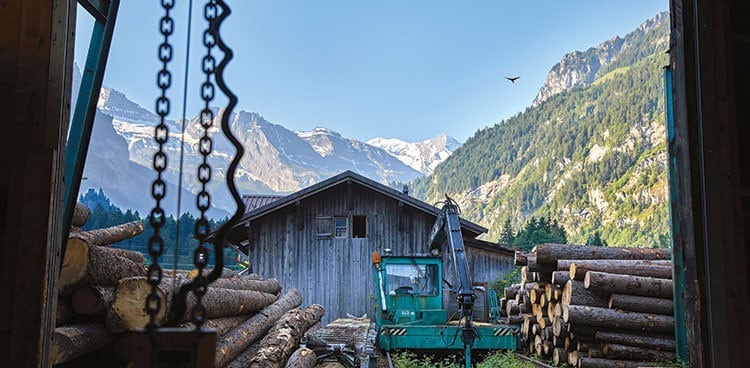
- Bunker employees now oversee the aging of 6,400 Gruyère AOP wheels from 10 to 24 months of age (top); At the cave’s opening party, the first wheel of Rahmtaler aged inside is cut open (right).
 After completing the project, Gourmino commissioned a local artist to decorate an entrance. A second entrance (seen here) depicts one of the company’s affineurs.
After completing the project, Gourmino commissioned a local artist to decorate an entrance. A second entrance (seen here) depicts one of the company’s affineurs.
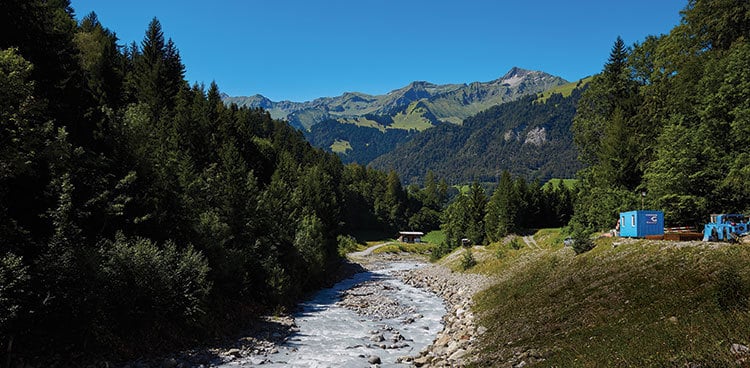
The bunker doors look out on to the Kien River, which supplies water to the affinage facility.
Featured image: One of the bunkers stocked with wheels of Emmentaler AOP and Rahmtaler.



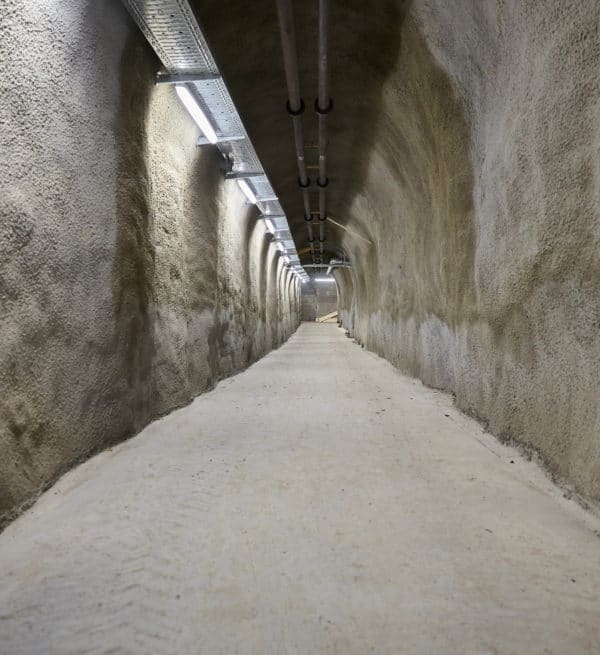
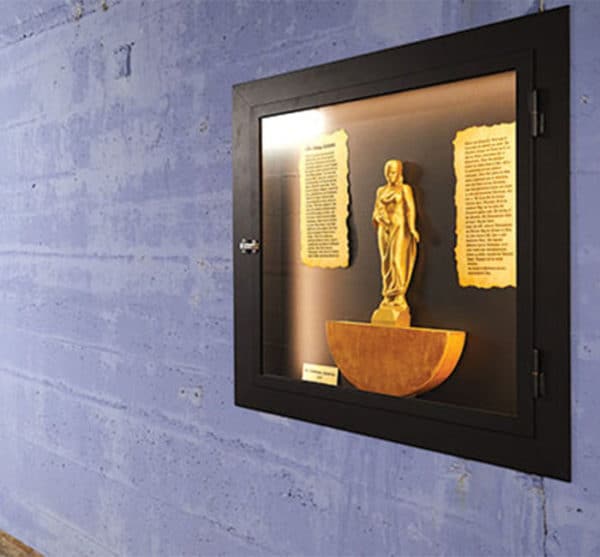





are there tours available of the cheese cave I will be in Switzerland April and early May I am also a chef
Thank you
We recommend reaching out to info@gourmino.ch regarding information about tours! Good luck!